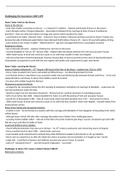Summary
Summary Tudors Depth Study Edexcel History - challenging the succession
- Course
- Institution
- Book
These condensed revision notes cover the years 1485 to 1499 of the depth study of the tudors. It includes all the key details making them perfect to revise from and review your knowledge so far.
[Show more]




